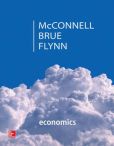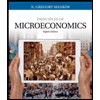
Sub part (a):
To determine: The flow of income.
Sub part (a):
Explanation of Solution
The construction of school forces the government to boost is expenses in the market by increasing business revenues. Resource owners of the school construction have a raise in income. These resources need to be side tracked from private sector. Taxes might have to increase to construct the high school.
In case, the economy is facing an
Concept Introduction
Circular flow: It is a way of representing the flow of money between the two main groups in society - producers (firms) and consumers (households). This flow is a part of the fundamental process for satisfying human wants.
Sub part (b):
To determine: The flow of income and impact of tax.
Sub part (b):
Explanation of Solution
It reduces the financial resources transfer from the businesses to the government. Then the business tax reduces and thus, the business owners will get a bigger percent of the income. These companies use the amplified profits to acquire capital commodities and labor. The weakening of the commercial income tax forces the government to reduce spending, and corporate spending increases the causing resource reallocation.
In case, the economy is facing unemployment and no reduction in government expenses, we see an increased spending if the companies increase their expenses on capital commodities. The distribution effect will have a dependency in knowing if the profits are going straight to people with a higher income or are these being spent for the assets and employees of the organization.
Sub part (c)
The impact over the resource reallocation of the economy.
Sub part (c)
Explanation of Solution
This will cause an increase in commodities and services to people from the government or this can be termed as net taxes that are being reduced, which is the same to a raise in transfer payments. This is the income’s redistribution in support of the people who are not wealthy. Resources to be paid by the government will be going up as additional teachers need to be employed and salaried.
This will need the resource reallocation from the private sector to the public sector by reducing the unemployment rate. In this case, there will be an upward pressure on prices to an extent if this is a transfer payment program and the production will not increase.
Sub part (d):
The impact over the resource reallocation of the economy.
Sub part (d):
Explanation of Solution
This will cause an increase in net taxes paid by business. As the business will see this as an increase in costs, it will bring down its
The households will reduce their demand for utilization of commodities and services from companies as they have a low income. So the net household taxes that the government receives will decrease. The distribution of income will be away from profits toward the other three categories to the extent that the total tax revenues increase.
There will be a slight increase in the allocation of resources from the private sector to the public sector. Resources will also be allocated towards pollution control equipment. As the supply has reduced due to the increase in costs to business, unemployment and thus, the prices will increase.
Want to see more full solutions like this?
Chapter 18 Solutions
Economics: Principles, Problems, & Policies (McGraw-Hill Series in Economics) - Standalone book
- (c) Assume an infinite horizon, continuous time and certainty. Furthermore, assume an additively separable utility function in consumption C and pollution stock S so that, U(C,S) = u(C) + v(S), where uc > 0; Ucc 0. Note that the first derivative, and the second subscript denotes the second derivative. The evolution of the pollution stock S over time is a function of consumption, decay rate of the stock of pollution & and abatement through the function, g(S) with gs > 0 and 9ss < 0. Time subscripts are ignored for ease of notation. Show that in the case of a stock pollutant, the marginal utility of consumption should equal the present value of disutility associated with the pollution stock. Interpret the condition.arrow_forwardQ3/for a closed loop system whose block diagram is shown in the figure determine the values of K and t such that the maximum overshoot to the unit step input is 25% and time to peak is 2 sec K 1+TS $2arrow_forward2. Question The 'Democratic Family' consists of three members {mother m, father f, daughter d}, that have different preferences with respect to how much money X € [0,8] they think should be invested in the new family car. These preferences can be represented by the following utility functions: - Mother m: um(X) = 2X - X² Father f: uf(X) = 10X - X² - Daughter d: ud(X) = 4X - X² Calculate for each family member (f, m, d) the preferred amount of money to invest in the new car denoted by X; for i = {m, f,d}. Assume that (Xf, Xm, Xd) are the three alternatives on which the family must decide. Show that each family member has rational preferences over this domain. Preferences on the family level are determined by pairwise majority voting (all family members vote on two alternatives). Derive the family preference and check whether it is rational. Assume that the final family decision is made by conducting sequential pair- wise majority voting, where the loosing alternative is eliminated. Does…arrow_forward
- 3. Question You invented a new lateral-flow test for asymptomatic Covid-19 detection, where saliva is entered into a test-tube and then the result is shown directly on the device. However, to save on costly chemicals you designed the tests such that it always reports a negative test result. Assume that the incidence rate is 5 per 1000 and that your test is used for detection of asymptomatic cases (without symptoms). (a) Calculate the probability that 100 randomly determined volunteers receive a correct test result by using the AND-rule and the OR-rule. Can your test be qualified as a diagnostic test? (b) The health authorities are investigating the performance of your test. Government guidelines require a specificity (conditional probability to re- ceive a negative test result given that the test-taker is not infected with COVID19) of at least 97% and a sensitivity (conditional probability to receive a positive test result given that the test-taker is infected with COVID-19) of at…arrow_forward3. Question You invented a new lateral-flow test for asymptomatic Covid-19 detection, where saliva is entered into a test-tube and then the result is shown directly on the device. However, to save on costly chemicals you designed the tests such that it always reports a negative test result. Assume that the incidence rate is 5 per 1000 and that your test is used for detection of asymptomatic cases (without symptoms). (a) Calculate the probability that 100 randomly determined volunteers receive a correct test result by using the AND-rule and the OR-rule. Can your test be qualified as a diagnostic test? (b) The health authorities are investigating the performance of your test. Government guidelines require a specificity (conditional probability to re- ceive a negative test result given that the test-taker is not infected with COVID19) of at least 97% and a sensitivity (conditional probability to receive a positive test result given that the test-taker is infected with COVID-19) of at…arrow_forwardI need expert handwritten solutionsarrow_forward
- machine A operated manually cost 2000naira has a life of 2 years, while an automatic machine B cost 5000naira but has a life of 4 years,operating cost for machine A is 4000naira per year while of machine B is 3000naira only, which should be purchased?consider 10% interest I need expert handwritten solutionsarrow_forwardDon't used Ai solutionarrow_forwardNot use ai pleasearrow_forward
 Principles of MicroeconomicsEconomicsISBN:9781305156050Author:N. Gregory MankiwPublisher:Cengage Learning
Principles of MicroeconomicsEconomicsISBN:9781305156050Author:N. Gregory MankiwPublisher:Cengage Learning Principles of Economics 2eEconomicsISBN:9781947172364Author:Steven A. Greenlaw; David ShapiroPublisher:OpenStax
Principles of Economics 2eEconomicsISBN:9781947172364Author:Steven A. Greenlaw; David ShapiroPublisher:OpenStax Principles of Economics (MindTap Course List)EconomicsISBN:9781305585126Author:N. Gregory MankiwPublisher:Cengage Learning
Principles of Economics (MindTap Course List)EconomicsISBN:9781305585126Author:N. Gregory MankiwPublisher:Cengage Learning Principles of Microeconomics (MindTap Course List)EconomicsISBN:9781305971493Author:N. Gregory MankiwPublisher:Cengage Learning
Principles of Microeconomics (MindTap Course List)EconomicsISBN:9781305971493Author:N. Gregory MankiwPublisher:Cengage Learning Principles of Economics, 7th Edition (MindTap Cou...EconomicsISBN:9781285165875Author:N. Gregory MankiwPublisher:Cengage Learning
Principles of Economics, 7th Edition (MindTap Cou...EconomicsISBN:9781285165875Author:N. Gregory MankiwPublisher:Cengage Learning





